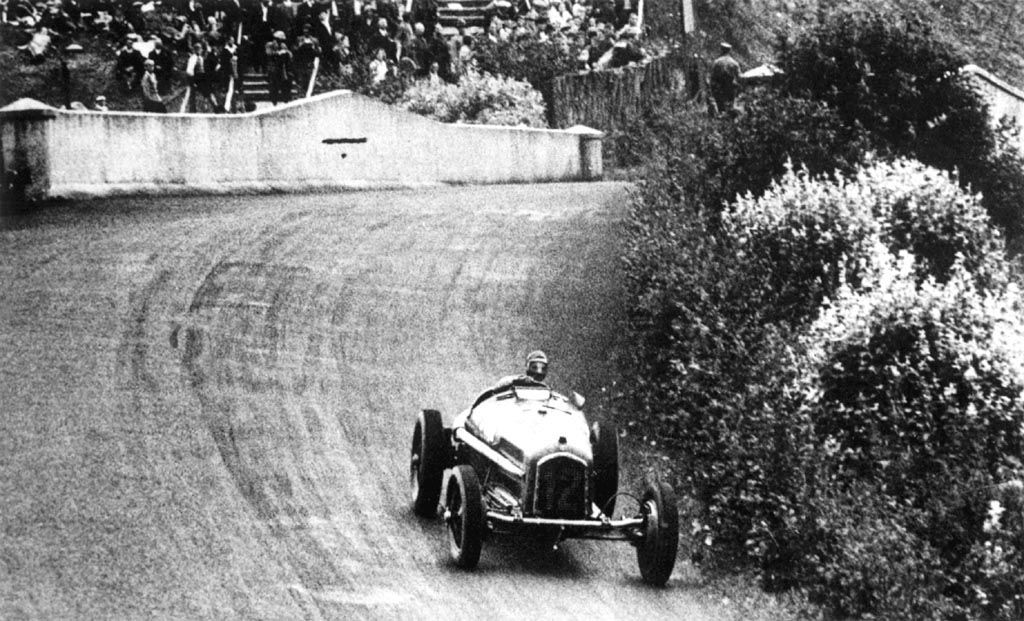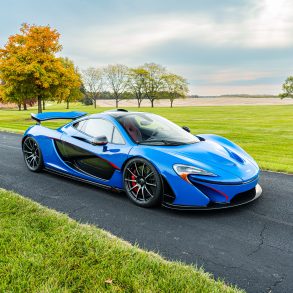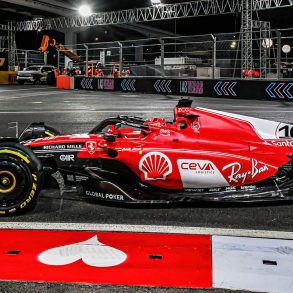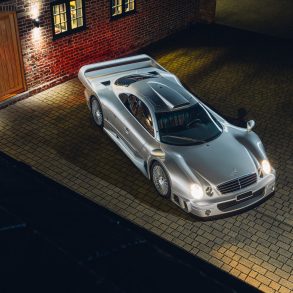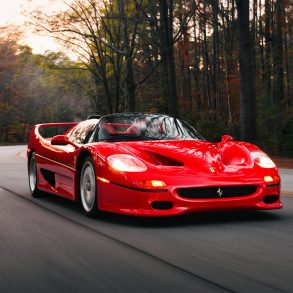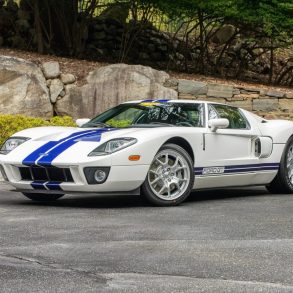1935 German Grand Prix – The Maestro and the Pechvogel
By Douglas S. Brown
The proud aristocratic German felt that he had the race in his pocket. There was just over one lap to go in the 1935 Grosser Preis von Deutschland. Manfred von Brauchitsch, in the most powerful racing car of the day, the 445 bhp W25 Mercedes Benz, led Tazio Nuvolari’s outdated 330 bhp Alfa Romeo by 35 seconds, and the rest of the field trailed behind.
He knew that the hopes of the 300 000 spectators and indeed the hopes of Nazi Germany rested on his shoulders. He knew that the Führer himself was taking a keen interest in the race, and was anxious that one of the nine powerful German entrants won, preferably with a German driver. Von Brauchitsch, whose Uncle Walther held a prominent position in the German Army (he was later to become a Field Marshal) was perhaps the most loyal of all the German drivers to the cause.
Manfred listened to the shrill scream of the Mercedes engine. It sounded as crisp as it had done at the start. He glanced at his tyres; the front two looked fine; the right rear – okay; but what was this – the left rear had a white band in the middle; the tyre was beginning to break up!
Manfred knew that to go into the pits to fit a replacement tyre, despite the Mercedes’ mechanics reputation for the fastest pitwork in the world, would hand the race on a plate to the Italian. There was no choice, he would have to drive the final 14.17 mille lap, and hope……
By 1935, the German Grand Prix was regarded as the most important race in the calendar. The German cars were thought to be unbeatable, the French and Italian opposition was in disarray. July 28th, the great day for which motor racing enthusiasts of all nations had been waiting, had finally arrived. For two days, the roads around the wonderful Nurburgring, the finest road-racing circuit in the world, were thick with would-be spectators. The day dawned with a fine drizzle and mist cloaked the pine-clad mountains amid which the course lay. Patches of light fell upon the distant hill-tops, but the track was wet and glistening. Hundreds of flags added colour to the scene as they floated above the pits and grandstands.
For the race, Mercedes Benz had entered no fewer than five cars, driven by Caracciola, von Brauchitsch, Fagioli, Geier and Lang. The V-16 4.9 litre 350 bhp Auto Unions were piloted by Stuck, Rosemeyer, Pietsch and Varzi. Both German cars could, and did, exceed 175 mph.
The Alfa Romeos were then being raced by Enzo Ferrari and that year were known to be out of date. The engines were derived from the historic P3 and were of 3.2 litres. Compared to the German cars, the Alfa Romeo was high and cumbersome in appearance but it was extremely stable. The drivers were Nuvolari (whose car had a 3.8 litre engine), Chiron, and Dreyfus.
The rest, basically there to make up the numbers, consisted of three Maseratis of the Scuderia Subalpina (Zehender,Etancelin and Siena), Balestrero with a private Alfa Romeo, Taruffi with a 3.3 Bugatti, Ruesch, Hartmann and Soffieti with independent Maseratis and von Delius and Mays on 2 litre E.R.A.s.
Von Delius crashed his E.R.A. in practice, but, as Raymond Mays’ machine broke a piston, the other car was hastily straightened out and given to Mays. Brivio replaced Dreyfus, and Ghersi took Siena’s wheel. Soffieti was a non-starter. Six nations and six makes were represented on the starting grid. (It was 1937 before the AvD ruled that grid positions would be decided on practice times).
The start of such a race was always one of the most dramatic sights in the world. The drivers sat, goggled, in linen helmets, eyes on the traffic light starting signal, while the air to the howl and thunder of the big engines. Then as amber changed in 15 sec. to green , they surged off with blue smoke pouring off the rear treads and long black lines marking where they had stood. Trouble struck instantly for the Auto Unions, Stuck and Pietsch both stalling on the line. Stuck’s mechanic rushed to aid him while the field swept away around him, but he was unknowingly bowled over and injured by a wheel of Varzi’s Auto Union as it accelerated away.
Meanwhile Caracciola, bursting through from the third row, led from Nuvolari, Fagioli, Brauchitsch and, thrillingly for the British contingent present, Mays in the green E.R.A., its acceleration having given it a great start. The loudspeakers excitedly relayed the cars’ progress in the first hectic round. Then ‘5’ lit up on the scoreboard, signaling the leader at Schwalbenschwanz, just before the long switchback straight on to the Start und Ziel, and soon there came a shrill scream and Caracciola slammed past, 12 seconds ahead of Nuvolari and Fagioli. Fourth came new boy Rosemeyer, then Brauchitsch, Chiron, Brivio, Varzi, Taruffi, Lang, Geier and the rest in ear-splitting succession – all save the veteran Balestrero who left the road and the race early on. Then Nuvolari’s Alfa was overwhelmed. On lap two, the order was Caracciola (Mercedes, still 12 seconds ahead) – Rosemeyer (Auto Union) – Fagioli (Mercedes) – von Brauchitsch (Mercedes) – Nuvolari (Alfa Romeo). Two laps later, Chiron (Alfa Romeo) slipped into fourth place, and Nuvolari slipped back to sixth. Then Chiron’s differential packed in, and the third Alfa Romeo likewise blew up, so Nuvolari was left on his own against the nine German cars.
Now the wiry little Italian really began to motor, while Rosemeyer overdid a corner, swung wildly, and plunged in and out of a ditch. He stopped at the pits with a wobbling rear wheel and dirt blocking the air intake. Nuvolari passed him on lap 6, passed von Brauchitsch on lap 7, was re-passed by the latter on lap 8, caught von Brauchitsch again, and Fagioli as well, on lap 9, and passed Caracciola to lead the race on lap 10. The crowd could scarcely believe their eyes.
The eleventh lap, half-distance, and excitement reached fever pitch as the four leaders – Nuvolari, Caracciola, Rosemeyer and von Brauchitsch – all rushed to their pits for fuel and tyres. Now the race was in the hands of the mechanics, and Mercedes pitwork won, Brauchitsch screaming away after just 47 seconds. Caracciola was off next (1 min 7 sec), then Rosemeyer (1 min 15 sec), but Nuvolari’s red Alfa remained stationary. The pressure-pump for the fuel would not work – they broke the hand lever – and while Chiron attended to Nuvolari, (who was far from calm and dancing with excitement, waving his arms and urging them to hurry), wiping his face and handing him clean goggles, the fuel had to be splashed into the tank from churns. An eternity of 2 min 14 sec elapsed before, at last, he tore off, now back in sixth place again but driving as only an agitated Nuvolari could, in a car well suited to the conditions, unembarrassed by excessive power on a wet track. Stuck re-wheeled and re-fuelled on the next lap; Mays handed over the E.R.A. to von Delius.
Temporary race leader Fagioli stopped for refueling on lap 12, losing 51 secs. and four places, so close was the fight. Von Brauchitsch, seeing that his chance had come, thundered round the twists and turns of the long circuit at 80.53 mph. Fagioli was in trouble with shock absorbers, Rosemeyer with fuel feed. On lap 13 Nuvolari slammed past Stuck, Fagioli and Caracciola as if they were novices, and when Rosemeyer made for his pit with a broken petrol pipe, the Italian found himself in second place, 1 min 9 sec behind von Brauchitsch.

Unexpected, too, was the second man, Hans Stuck in his Auto Union, followed by a virtually brakeless Caracciola, then Rosemeyer came in fourth. Fifth, crushed by Fate’s cruel blow so near to triumph, came the Pechvogel, who pulled up well away from the pits in a fruitless effort to hide his tears of sheer disappointment.
This was a once-and-for-all triumph for the human qualities of skill and courage and judgement against the hard mechanical facts of speed and power and acceleration. The Nazi officials were confounded by the lack of a recording of the Italian anthem to play over the loudspeakers when only Deutschland Uber Alles had been ready for the inevitable German triumph, but Nuvolari himself was able to right the situation with his own record of the Marcia Reale, which he always carried as a good luck charm.
So ended what is regarded as Nuvolari’s finest race in a lifetime of magnificent performances. To win with the fastest car on the circuit proves mastery of the steering wheel; to win with one of the slowest against the strategy of two full teams of faster cars was a demonstration of the super skill and lion-hearted determination of that little Italian, fighting his way back into the race after that disastrous pit stop, snatching his seconds by sheer speed through the corners and his uncanny ability to brake less and later than anyone else and yet get the big car through the curves on the very brink of catastrophe without making one single mistake.
1935 German Grand Prix Results
- Tazio Nuvolari (Alfa Romeo)
- Hans Stuck (Auto Union)
- Rudolf Caracciola (Mercedes)


